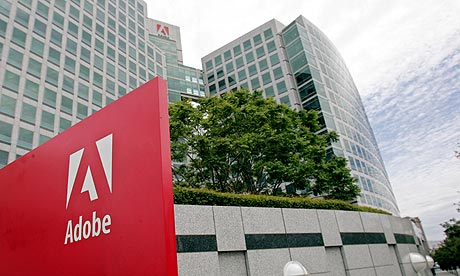 To save money, naturally – though the idea that a company whose only products are an ethereal string of zeros and ones would shut down in the manner of a car factory pondering a huge glut of unsold vehicles seems bizarre.
To save money, naturally – though the idea that a company whose only products are an ethereal string of zeros and ones would shut down in the manner of a car factory pondering a huge glut of unsold vehicles seems bizarre.
Adobe, however, says that the closure of its North American operations for a week is part of a cost-cutting effort that will be repeated at least once more this year, following a similar pause in April. And that's in addition to its policy – taken for granted in the UK, not so in the US – of shutting between Christmas and New Year's Day. In all, the company is now implementing a week's paid break for staff every quarter.
Could anyone object to getting four weeks' holiday in a country where that could seem generous? The problem is that Adobe's reasons for the shutdowns – its attempts to cope with the economic slowdown that has, in turn, reduced demand from its core customer base in the "creative knowledge worker business" – don't mean that it's easing up on staff.The office closures didn't mean that deadlines were pushed back by a week for those developing software software. And for those preparing for a conference, such as the RSA conference in April, which came immediately after one of Adobe's one-week breaks, there was simply no let-up.
Adobe is under pressure, no doubt. In December it said it would lay off around 600 staff from its worldwide workforce – at the time, more than 7,500. Its sales declined in the past two quarters, though they were healthy enough: $126.1m (£73.3m) profit on £$704.7m for the quarter ended 29 May.
Still, those revenues were down 21% as customers held back from upgrading to the latest version of Adobe's Creative Suite (CS4) programs, which generate about 60% of the company's sales.
People in the UK, of course, may have a better reason than any for pausing, as the – an increase that was announced earlier in June but that is still not documented on the company's UK website. That has pushed the disparity between the pricing of CS4 in the UK and US to 39.7%.
Adobe insists that the price rise was because of exchange rates, but that did not satisfy many commenters at the Guardian when the price rise was discovered. Adobe has not made any comment on the effect of the price rise announcements on sales in the UK.
However, the closure implies that the brave new age of the knowledge worker wrangling bits to create seamless products that can travel effortlessly over the internet at the speed of light looks a lot like the mechanical age when people bashed metal and had to make supply meet demand. The problem now is not the supply: it is the far trickier problem of managing prices to keep demand constant or rising.



